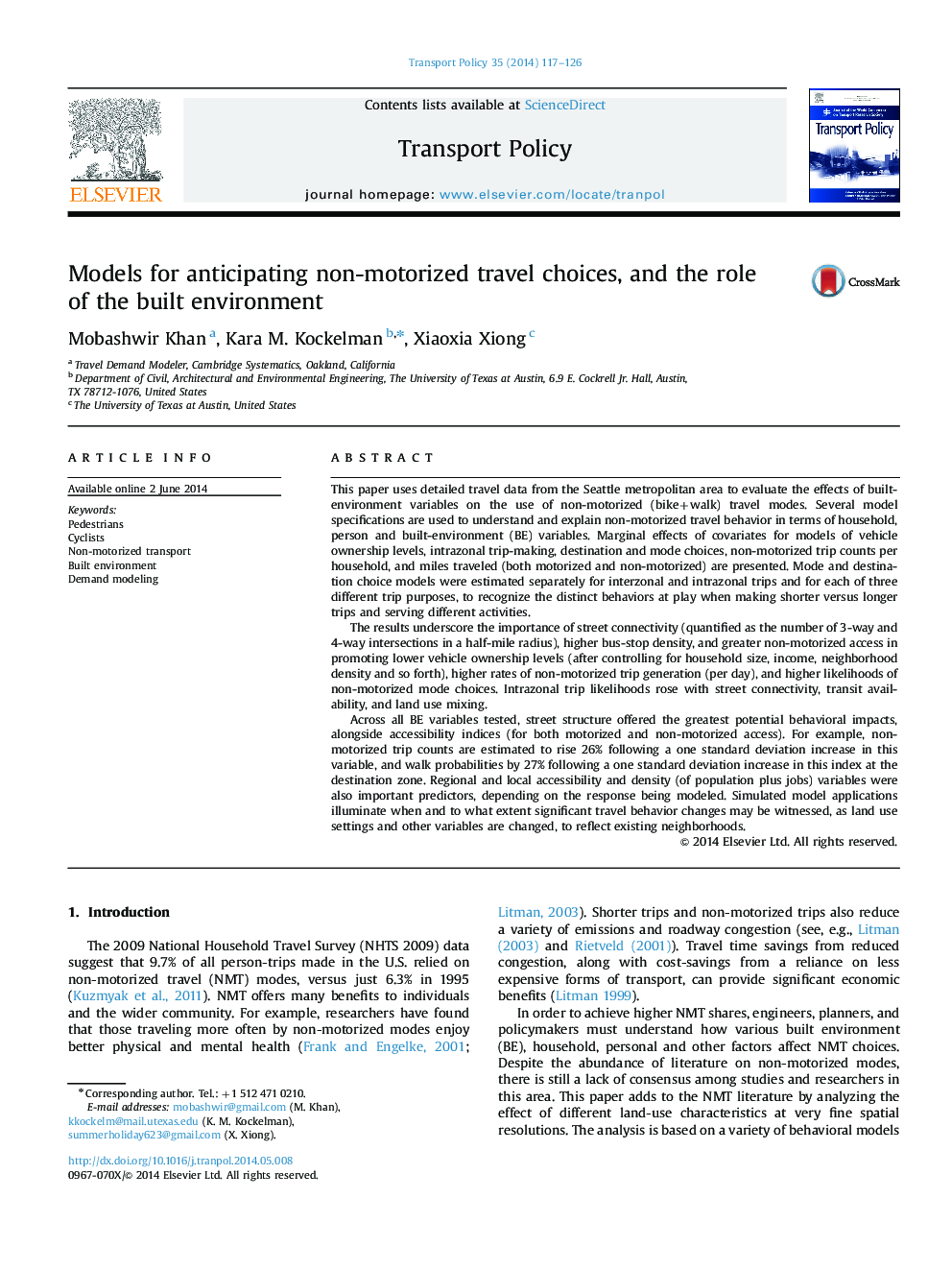| کد مقاله | کد نشریه | سال انتشار | مقاله انگلیسی | نسخه تمام متن |
|---|---|---|---|---|
| 1064865 | 1485842 | 2014 | 10 صفحه PDF | دانلود رایگان |
• The built environment and demographic characteristics affect non-motorized travel.
• Household size, income, neighborhood density and other covariates were considered.
• Of all BE variables tested, intersection density offered the greatest predictive benefits.
• Incline, traffic, bike lanes and sidewalks are among key factors in mode choice.
This paper uses detailed travel data from the Seattle metropolitan area to evaluate the effects of built-environment variables on the use of non-motorized (bike+walk) travel modes. Several model specifications are used to understand and explain non-motorized travel behavior in terms of household, person and built-environment (BE) variables. Marginal effects of covariates for models of vehicle ownership levels, intrazonal trip-making, destination and mode choices, non-motorized trip counts per household, and miles traveled (both motorized and non-motorized) are presented. Mode and destination choice models were estimated separately for interzonal and intrazonal trips and for each of three different trip purposes, to recognize the distinct behaviors at play when making shorter versus longer trips and serving different activities.The results underscore the importance of street connectivity (quantified as the number of 3-way and 4-way intersections in a half-mile radius), higher bus-stop density, and greater non-motorized access in promoting lower vehicle ownership levels (after controlling for household size, income, neighborhood density and so forth), higher rates of non-motorized trip generation (per day), and higher likelihoods of non-motorized mode choices. Intrazonal trip likelihoods rose with street connectivity, transit availability, and land use mixing.Across all BE variables tested, street structure offered the greatest potential behavioral impacts, alongside accessibility indices (for both motorized and non-motorized access). For example, non-motorized trip counts are estimated to rise 26% following a one standard deviation increase in this variable, and walk probabilities by 27% following a one standard deviation increase in this index at the destination zone. Regional and local accessibility and density (of population plus jobs) variables were also important predictors, depending on the response being modeled. Simulated model applications illuminate when and to what extent significant travel behavior changes may be witnessed, as land use settings and other variables are changed, to reflect existing neighborhoods.
Journal: Transport Policy - Volume 35, September 2014, Pages 117–126
